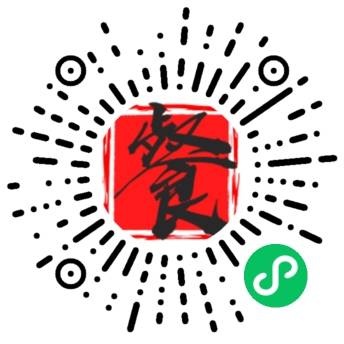▲Follow us and “Sticky On Top”
Annie Liu, country manager at Innova Market Insights, said launches for cheese increased 688%, milk and milk drinks 48%, spoonable yoghurt36% and drinkable yoghurt 25%.
Image Source:Food Navigator-Asia
China’s dairy market has been growing rapidly across categories in the past two years, with the market buoyed by changing consumer tastes and extensive new product development.
According to market research firm Innova Market Insights, the growth of dairy product launches in China from 2016 to 2017 was 44%, while the growth in market value was 8%.
Furthermore, in terms of launch activity across dairy sub-categories, in that same period, cheese increased by 688%, milk and milk drinks grew by 48%, spoonable yoghurt rose by 36% and drinkable yoghurt by 25%.
Chinese for cheese
Annie Liu, country manager at Innova Market Insights, said cheese had finally caught on for the Chinese. In terms of consumption habits, consumers are now eating cheese throughout the day.
For instance, during breakfast (32.4%), as a morning snack (26.1%), during lunch (20.7%), afternoon snack (23.5%) and dinner (16.8%). This is in contrast to US consumers, of which a great percentage (61.3%) consumed cheese during lunch, and an also high percentage during dinner (44.3%) with comparatively low ratings at other times.
Liu, speaking at the FI Asia-China show, said cheese products are also gaining more shelf space in China, with new cheese launches having a CAGR of 46% from 2013 to 2017.
In terms of category strategy, eye-catching packaging is being used to attract children, while listed nutritional benefits are drawing parents.
A perfect example would be President Lollo Lolla Kids Cheese Dessert with strawberry flavour. Not only is the packaging bright and attractive, it also claims to provide children with necessary nutrients like protein and calcium.
The segment is also seeing high diversity in cheese snacks, with food firms innovating with formats and flavours. According to Innova, one in two cheese products are flavoured, with most being fruit-flavoured.
Cheese is also becoming a snack for healthy indulgence, with protein being one of the fastest-growing health claims for launches in the segment.
Another successful strategy in cheese is the emphasizing of foreign or European origin.
Dairy diversity
Liu also said there is now more choice in drinkable yoghurt, milk and milk drinks, with launch activity for drinkable dairy products evidencing accelerated growth since 2015.
The CAGR for milk and milk drinks from 2013 to 2017 is 20.8% and 18.6% for drinking yoghurt and fermented beverages.
One unique characteristic of the Chinese dairy market is that it has a variety of sources for milk and milk products — including goat, buffalo, yak and camel. These are highlighted and often come at a higher cost.
For milk and milk drinks, high source of protein is the top health claim at 21.3%, followed by bone health at 16.3%.
For drinking yoghurt or fermented beverages, the overwhelming leader is digestive or gut health at 37.8%, followed by low-fat at 9.8%.
Live and active cultures is an increasingly-common claim, such as the Wei Chuan 60 Billion Lactobacillus Yoghurt Drink, which claims to have 60 billion lactobacillus cultures, Danish active bacteria and 60% less sugar.
Additionally, Liu said manufacturers have been increasingly developing different formulas to cater to specific nutrition requirements of each consumer segment.
For instance, Knight Golden Multivitamin and High Calcium Milk Powder for the middle-aged and the elderly claims to be rich in calcium, zinc and selenium, with dietary fibre, Vitamin D3 and probiotics. It also has no sugar added.
Another is the Xinnong High Iron and Vitamin Milk Powder, for women. It contains iron and vitamins and comes in a package designed for women, in stick sachets.
Spoonable yoghurt soars
As for spoonable and drinkable yoghurt, both together experienced 16% CAGR from 2013 to 2017.
The two key aspects for Chinese consumers when purchasing yoghurt are health (37.5%) and flavour (36.3%).
Following the clean label trend,said Liu, no additives and preservatives claims have been seen more (with more than 10% increase) in spoonable yoghurt products tracked in China from 2013 to 2017. Increasing penetration of high source of protein claims have been observed as well (more than 13%).
The yoghurt sub-category is also seeing a lot more innovation.
“More and more manufacturers are tapping into the purchasing power of Millennials,” said Liu.
At the beginning of the year, Chinese dairy giant Mengniu launched Zuo yoghurt targeted at teenagers, which linked its flavours to emotions.
Moreover, from 2017, there have been more cooked yoghurt products entering the market.
Cooked yoghurt is made through a process of fortifying the milk with sugar and cooking it over low heat for hours before fermentation. This gives it a distinctive flavour and a light brown colour.
Liu said cooked yoghurt is usually sold at a relatively high price, but still attracts many Chinese consumers.
Similarly, with spoonabled dessert-style yoghurts believed to offer good scope for growth, more indulgent or premium varieties could emerge.
Source:Food Navigator-Asia
Author:Lester Wan
Tips:
*Have brilliant ideas or articles to contribute? Feel free to contact Wilbur Zhu (WeChat ID:aotokuer)
/ Read More/
World Dairy Innovation Awards Winners Announced
Market Shifts in Dairy Alternatives
/WeChat Groups /
Add Ada Chen (ID: 15021839607) to join the largest F&B WeChat Group in the world (more than 40,000+ members). WeChat Group include CEO,Dairy, Snacks, FSMP, Condiments,Marketing,retail,R&D,Packaging, OEM and etc. Follow us and reply “3” in the menu to get more information.
原创文章,作者:网络转载,如若转载,请注明出处:https://www.qiyu88.com/187032.html















